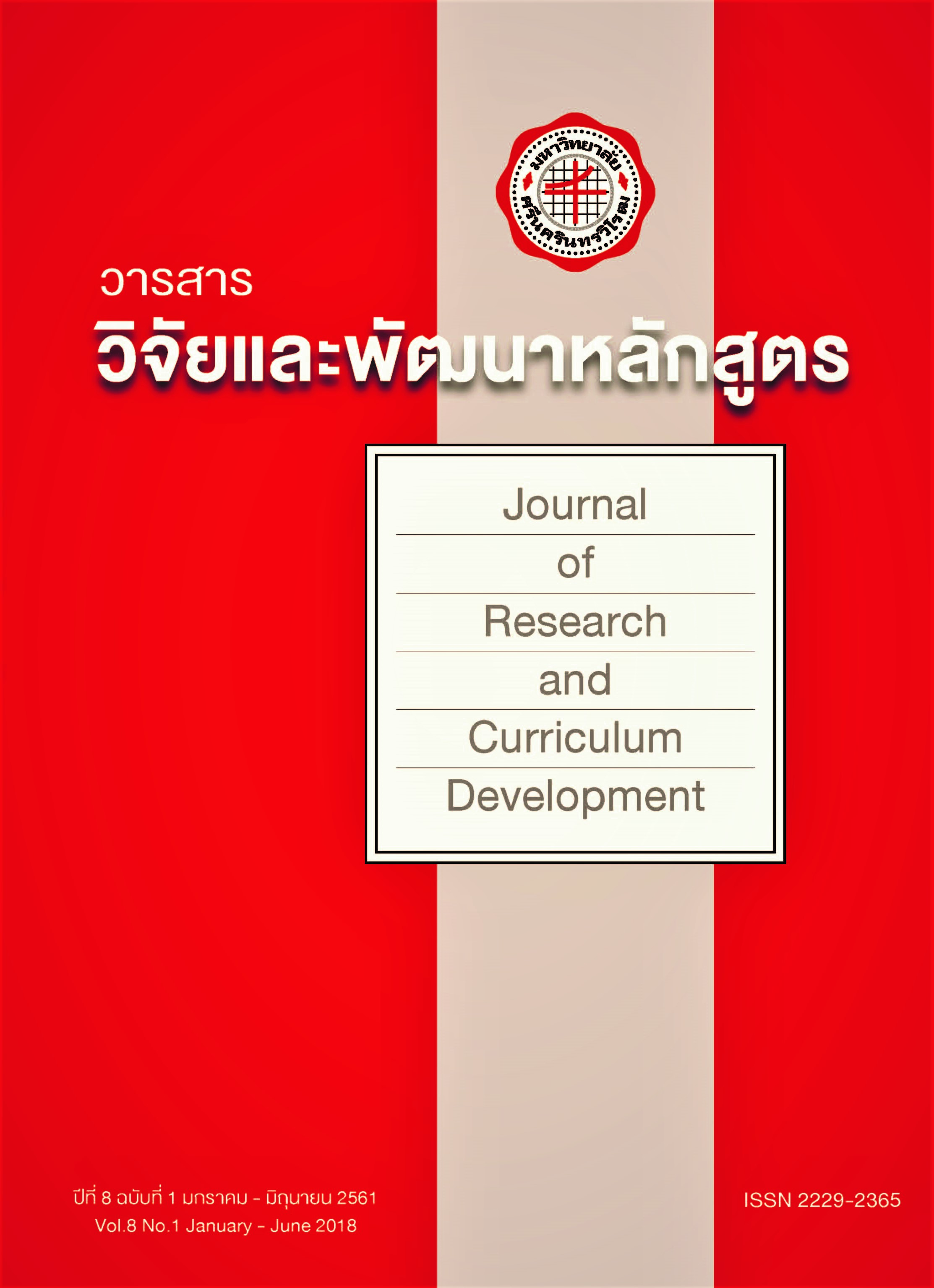กลยุทธ์การจัดการเรียนรวมอย่างมีประสิทธิผลสำหรับโรงเรียนมัธยมศึกษา สังกัดสำนักงานคณะกรรมการศึกษาขั้นพื้นฐาน
Keywords:
Strategy, Inclusive Education, Effective Inclusive EducationAbstract
The objectives of this study were to 1) develop Strategies for Effective Inclusive Education for secondary schools under the office of Basic Educational Commission 2) verify the appropriateness of the developed strategy and 3) develop a guideline on the implementation of the developed strategy. A mixed-methods between qualitative and quantitative research was employed in this study, and the study was divided into 4 phases. Phase 1was the research framework determination ,which was conducted in 3 parts. The first part was the study of relevant documents
and researches. The second part was an interview with 9 professioners, while the third part was the multi-case studies of 3model schools. Phase 2 was the strategy creation and development, which was conducted in 3 parts. The first part
was creation strategies by synthesis the data from phase 1.The second part was development the strategies by application of Modified Delphi Technique for 3 rounds and an inquiry with 21 experts. Phase 3 was the appropriateness verification in the strategy implementation by conducting an opinion survey from 630 stakeholders. Phase 4 was the development of the guideline on strategy
implementation, which was presented to 5 experts for appropriateness and content verification for application and guideline improvement.
The study found that: 1.The Strategies for Effective Inclusive Education comprised 6 strategies. Strategy 1was learning and teaching, consisted of 3 activities: 1) the Individualized Education management for teachers and 3) development technology skills for teachers. Strategy 3 was student development, consisted of 2 activities: 1) the preparing students and 2) the promotion the talent of disabled students. Strategy 4 was tools development, consisted of 2 activities: 1) the development of equipment, tools and innovations for disabled students and 2) the disability
services. Strategy 5 was environment development, consisted of 2 activities: 1) the physical environment development and 2) the development of person involved in the environment of disabled students. Strategy 6 was Management, consisted of 6 activities: 1) the policy formulation and inclusive education planning; 2) the public relations; 3) the creating a shared inclusive education network; 4) the budget allocation; 5) the student screening and 6) the supervision, monitoring and
evaluation of inclusive education 2. The overall appropriateness for application of the developed strategy was at the highest level. 3. The content of the guideline on the implementation of developed strategy consisted of explanation, objectives, benefits, backgrounds, the developed Strategies for Effective Inclusive Education, the role of stakeholders involved. It was found to be accurate with the overall appropriateness for application at the highest level.
Keywords : Strategy, Inclusive Education, Effective Inclusive Education

